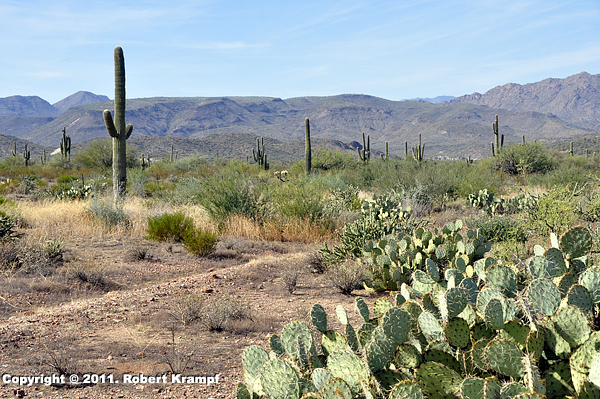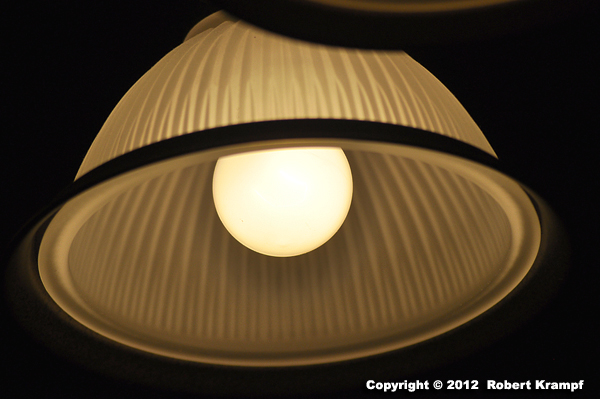Here are some science questions to help you test your knowledge of the Next Generation Sunshine State Standards.
The questions are chosen randomly, so this quest will be different each time you reload the page.
Back to the Grade 5 standards.
Which of the following forms of ice commonly occurs in the summer when air temperatures are well above freezing?

A: Hail

B: Snow

C: Frost

D: Freezing rain
Think about it, and when you think you know the answer, then click here.
While other kinds of frozen precipitation can form at high altitudes, in the summer they usually melt long before they reach the ground. Hail is made up of large enough chunks of ice that it usually remains frozen all the way to the ground, even during warm weather.
Click to see which state standards this question tests, and which of my videos, experiments, and other resources support that topic.
Florida
SC.5.E.7.4 Distinguish among the various forms of precipitation (rain, snow, sleet, and hail), making connections to the weather in a particular place and time.
| Building a Rain Gauge, part 2 | video, checked |
| Building a Rain Gauge, part 1 | video, checked |
| Photographing Snowflakes | video, checked |
| Snow Rollers | text page |
| Review Weather-6 | practice |
| Review Weather-3 | practice |
Utah
UT.4.II.2.a Observe and record effects of air temperature on precipitation (e.g., below freezing results in snow, above freezing results in rain).
| Building a Rain Gauge, part 2 | video, checked |
| Building a Rain Gauge, part 1 | video, checked |
| Photographing Snowflakes | video, checked |
| Review Weather-6 | practice |
| Review Weather-3 | practice |
NGSS
3-ESS2-1 Represent data in tables and graphical displays to describe typical weather conditions expected during a particular season.
| Nephoscope | video, checked |
| Pine Cone Weather | text page, free |
| Review Weather-5 | practice |
| Review Weather-6 | practice |
| Review Weather-4 | practice |
| Review Weather-3 | practice |
| Review Space-5 | practice |
| Review Space-8 | practice |
MS-ESS2-5 Collect data to provide evidence for how the motions and complex interactions of air masses results in changes in weather conditions.
| Cloud Types | video |
| Nephoscope | video, checked |
| Cloud Formation, part 1 | video, ClosedCaptions, checked |
| Pine Cone Weather | text page, free |
| Review Weather-1 | practice |
| Review Weather-2 | practice |
| Review Weather-6 | practice |
| Review Weather-4 | practice |
| Review Weather-3 | practice |

This snow fell when the temperature outside was 39°F. How can you get snow when the temperature is above freezing?
-
The wind made it feel colder, allowing it to snow.
No. While wind chill can make it feel colder, it does not actually make it colder. -
It was colder in the clouds where the snow formed.
Yes. Even when air temperatures at the surface are above freezing, the clouds can be much colder. If the air at the surface is not too warm, the snow can reach the ground without melting. -
Rain froze into snow when it hit the ground.
No. Freezing rain forms ice, not snow. Light, fluffy snow flakes form as they fall through the air, not after they hit the ground. -
This is really hail instead of snow.
No. Hail is made of large chunks of ice, not tiny flakes.
Click to see which state standards this question tests, and which of my videos, experiments, and other resources support that topic.
Florida
SC.5.E.7.4 Distinguish among the various forms of precipitation (rain, snow, sleet, and hail), making connections to the weather in a particular place and time.
| Building a Rain Gauge, part 2 | video, checked |
| Building a Rain Gauge, part 1 | video, checked |
| Photographing Snowflakes | video, checked |
| Snow Rollers | text page |
| Review Weather-6 | practice |
| Review Weather-3 | practice |
SC.6.E.7.3 Describe how global patterns such as the jet stream and ocean currents influence local weather in measurable terms such as temperature, air pressure, wind direction and speed, and humidity and precipitation.
| Nephoscope | video, checked |
| Review Weather-6 | practice |
Utah
UT.4.II.2.a Observe and record effects of air temperature on precipitation (e.g., below freezing results in snow, above freezing results in rain).
| Building a Rain Gauge, part 2 | video, checked |
| Building a Rain Gauge, part 1 | video, checked |
| Photographing Snowflakes | video, checked |
| Review Weather-6 | practice |
| Review Weather-3 | practice |
NGSS
3-ESS2-1 Represent data in tables and graphical displays to describe typical weather conditions expected during a particular season.
| Nephoscope | video, checked |
| Pine Cone Weather | text page, free |
| Review Weather-5 | practice |
| Review Weather-6 | practice |
| Review Weather-4 | practice |
| Review Weather-3 | practice |
| Review Space-5 | practice |
| Review Space-8 | practice |
MS-ESS2-5 Collect data to provide evidence for how the motions and complex interactions of air masses results in changes in weather conditions.
| Cloud Types | video |
| Nephoscope | video, checked |
| Cloud Formation, part 1 | video, ClosedCaptions, checked |
| Pine Cone Weather | text page, free |
| Review Weather-1 | practice |
| Review Weather-2 | practice |
| Review Weather-6 | practice |
| Review Weather-4 | practice |
| Review Weather-3 | practice |

How hot does an area have to be to be classified as a desert?
Answer:
Deserts are defined by lack of precipitation, not by temperature. They are areas where precipitation minus evaporation yields less than 10 inches of rain per year. The largest desert on Earth is in Antarctica, a very cold place.
Click to see which state standards this question tests, and which of my videos, experiments, and other resources support that topic.
Florida
SC.5.E.7.6 Describe characteristics (temperature and precipitation) of different climate zones as they relate to latitude, elevation, and proximity to bodies of water.
| Weather and Climate | video |
| Review Weather-9 | practice |
| Review Weather-7 | practice |
Utah
UT.4.V.1.c Locate examples of areas that have characteristics of wetlands, forests, or deserts in Utah.
| Review Weather-9 | practice |
| Review Weather-7 | practice |
NGSS

Incandescent light bulbs use electrical energy to produce light energy, but it is not a direct transformation. Instead, the electrical energy is changed to a different form of energy, and then to light.
Electricity → ? → Light
What form of energy does the "?" represent?
-
Sound
No. Electrical energy can be transformed into sound energy, but that would not cause the bulb to light. -
Thermal
Yes. As electrical energy flows through the filament, resistance changes the electrical energy into thermal energy. When the filament gets hot enough, some of the thermal energy is converted into light. -
Radiation
No. The electrical energy is not transformed into radiation. -
Friction
No. The electrical energy is not transformed into friction.
Click to see which state standards this question tests, and which of my videos, experiments, and other resources support that topic.
Florida
SC.2.P.10.1 Discuss that people use electricity or other forms of energy to cook their food, cool or warm their homes, and power their cars.
| Review Energy-3 | practice |
SC.5.P.10.4 Investigate and explain that electrical energy can be transformed into heat, light, and sound energy, as well as the energy of motion.
| Light a Bulb with a Balloon | video, checked |
| Electricity | video, free, Updated |
| Introduction to the LED | video, checked |
| Review Energy-3 | practice |
SC.7.P.11.2 Investigate and describe the transformation of energy.
| High Bounce | video, checked |
| The Rollback Can | video, free, Updated |
| Review Energy-3 | practice |
Utah
UT.3.V.2.c Predict, measure, and graph the temperature changes produced by a variety of mechanical machines and electrical devices while they are operating.
| Review Energy-3 | practice |
UT.8.IV.4.b Trace the conversion of energy from one form of energy to another (e.g., light to chemical to mechanical).
| The Rollback Can | video, free, Updated |
| High Bounce | video, checked |
| Measuring Kinetic and Potential Energy | video, checked |
NGSS
4-PS3-4 Apply scientific ideas to design, test, and refine a device that converts energy from one form to another.
| The Singing Glass | video, checked |
| The Slow Race | video, free, ClosedCaptions, Updated |
| Whistle Stick | video, text page, blog, free, checked |
| Simple Circuits | video, checked |
| Solar Power | video, checked |
| The Rollback Can | video, free, Updated |
| A Grass Whistle | video, checked |
| Bottle Tones, part 1 | video, checked |
| High Bounce | video, checked |
| Bottle Tones, part 2 | video, checked |
| Measuring Calories | video, ClosedCaptions, checked |
| Why Things Go Bang | video |
| Why We Sweat | video, checked |
| Sunglass Science: Birefringence | video, free, Updated |
| Sunglass Science: Polarized Light | video, free, Updated |
| Noisy String | video, checked |
| Spoon Bells | video, checked |
| Ice Cream Science | video, checked |
| Making a Screamer | video, free, Updated |
| Measuring Kinetic and Potential Energy | video, checked |
| Sunlight, Energy, and Crayons | text page, free |
| Review Energy-5 | quest |
| Review Energy-3 | practice |

Which of the following is a major characteristic of hurricanes?
-
Low barometric pressure
Yes. Hurricanes always have very low barometric pressure. -
High barometric pressure
No. Hurricanes always have very low barometric pressure. -
Winds blowing towards the shore.
No. The direction of the winds depends on the location of the storm, relative to the shore. Depending on location, hurricane winds can blow towards shore, away for shore, or parallel to the shore. -
Winds blowing away from the shore.
No. The direction of the winds depends on the location of the storm, relative to the shore. Depending on location, hurricane winds can blow towards shore, away for shore, or parallel to the shore.
Click to see which state standards this question tests, and which of my videos, experiments, and other resources support that topic.
Florida
SC.5.E.7.3 Recognize how air temperature, barometric pressure, humidity, wind speed and direction, and precipitation determine the weather in a particular place and time.
| Nephoscope | video, checked |
| Building a Rain Gauge, part 2 | video, checked |
| Building a Rain Gauge, part 1 | video, checked |
| Pine Cone Weather | text page, free |
| Review Weather-5 | practice |
| Review Weather-4 | practice |
Utah
UT.4.II.1.d Compare the components of severe weather phenomena to normal weather conditions (e.g., thunderstorm with lightning and high winds compared to rainstorm with rain showers and breezes).
| Review Weather-5 | practice |
NGSS
3-ESS2-1 Represent data in tables and graphical displays to describe typical weather conditions expected during a particular season.
| Nephoscope | video, checked |
| Pine Cone Weather | text page, free |
| Review Weather-5 | practice |
| Review Weather-6 | practice |
| Review Weather-4 | practice |
| Review Weather-3 | practice |
| Review Space-5 | practice |
| Review Space-8 | practice |
MS-ESS3-2 Analyze and interpret data on natural hazards to forecast future catastrophic events and inform the development of technologies to mitigate their effects.
| Review Weather-5 | practice |
The questions are chosen randomly, so this quest will be different each time you reload the page.
Non-subscriber
